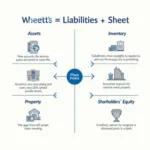Preparing for the TOEIC without the guidance of a teacher might seem daunting, but with the right strategies, you can absolutely excel. This guide will walk you through the “Best Strategies For TOEIC Without A Teacher” to help you achieve a high score and effectively manage your self-studying process. By following these tips, you’ll build your confidence, track your progress, and improve faster than you think.
Develop a Study Plan and Stick to It
To succeed in the TOEIC, planning is essential, especially when you’re studying alone. Create a detailed study plan with specific goals for each day or week, breaking the TOEIC sections into manageable parts.
Steps to Build an Effective Study Plan:
- Divide your time among the different sections of the test (Reading, Listening, Vocabulary, and Grammar).
- Start with your weakest sections. For example, if you struggle with listening comprehension, allocate more time to listening exercises at first.
- Use varied resources: textbooks, TOEIC mobile apps, and online platforms, like methods to excel in TOEIC without a teacher and how to manage time in TOEIC with free resources.
- Track your progress regularly with practice tests to see where you improve and which areas still need work.
Quote from TOEIC Expert – Nguyễn Văn Tùng:
“Following a structured schedule keeps you focused and avoids skipping important skills. Self-study only works if you make it consistent.”
Focus on TOEIC Core Vocabulary
Having a strong vocabulary is crucial for TOEIC success. As you won’t have a teacher guiding you through vocabulary, you will need to be especially intentional about your approach to learning new words.
![]() Effective vocabulary building methods for TOEIC self-study, including creating word lists and reading articles.
Effective vocabulary building methods for TOEIC self-study, including creating word lists and reading articles.
Quick Vocabulary Building Methods:
- Create word lists: Focus on commonly tested vocabulary specific to business, travel, and telecommunication.
- Use spaced repetition: This method ensures you recall words over a long period.
- Read articles and watch videos related to TOEIC topics (business reports, travel documentaries, etc.).
Pro Tip: Use online resources to enhance learning, such as quickest way to learn TOEIC vocabulary for self-study.
Practice Listening Every Single Day
The Listening section often poses challenges for self-learners. Thankfully, the internet is packed with free listening materials like podcasts, news programs, and online practice exams. Focus on understanding various accents—US, UK, Australian, and Canadian—as they frequently appear in the TOEIC Listening test.
Steps to enhance your listening skills:
- Listen actively: Don’t just listen passively. Pause and repeat phrases to ensure you understand completely.
- Use official TOEIC listening tests: Simulate test conditions by timing yourself.
- Engage in real-world listening: Like TED Talks or business news shows to mimic TOEIC vocabulary and sentence structure.
By enhancing your listening skills daily, you can sharpen your focus and improve comprehension exponentially.
![]() Practicing TOEIC listening with essential materials like podcasts and news programs.
Practicing TOEIC listening with essential materials like podcasts and news programs.
Improve Your Reading Speed
TOEIC Reading requires speed and accuracy. Without a teacher to push you, it’s essential you train yourself to read under time constraints.
Exercises to Boost Reading Speed:
- Practice reading business emails, job ads, and reports quickly but with complete comprehension.
- Use timed reading exercises, such as “skimming and scanning” techniques to locate key points faster.
- Answer sample TOEIC Reading questions and gradually reduce the amount of time allocated per question.
How to practice TOEIC like a pro is a great guide that provides more insights into mastering the Reading section.
Quote from TOEIC Expert – Trần Thị Thu:
“Speed reading is like a muscle; the more you use it, the stronger it gets. Practice regularly to improve not just speed, but also comprehension.”
Practice Under Exam Conditions
When preparing without a teacher, in addition to study materials, it’s crucial to replicate exam conditions occasionally. Simulating test conditions prepares your mind and body for maintaining focus and performance for the full test duration.
Steps for Simulation Practice:
- Sit in a quiet room and complete full-length practice tests within the allotted two hours.
- Use a timer for each section of the TOEIC (Listening: 45 minutes, Reading: 75 minutes).
- Review mistakes: After completing the exam, thoroughly review every mistake and incorrect answer.
This approach improves both time management and your familiarity with the TOEIC question structure. You can further enhance this skill by reading how to manage time in TOEIC without a teacher.
Emphasize Self-Correction and Reflection
Since you lack a teacher to point out your mistakes, learning from your errors becomes essential. After each practice session, review your incorrect answers carefully.
Techniques for Effective Self-Correction:
- Analyze the reasoning behind each wrong answer.
- Identify patterns in mistakes (grammar, misunderstanding vocabulary, or misinterpreting question stems).
- Maintain a “Mistake Journal” to note down and reflect on recurring errors.
![]() A learner reviewing a mistake journal for TOEIC preparation to track and correct common errors.
A learner reviewing a mistake journal for TOEIC preparation to track and correct common errors.
This self-reflective practice is particularly beneficial for long-term TOEIC improvement, and it sharpens your awareness of weaker areas.
Use Online Communities
Self-study can sometimes feel lonely, but you don’t need to prepare entirely solo. Join online TOEIC forums or discussion groups where learners exchange resources, tips, and motivation.
Active engagement will give you insights into others’ self-study methods and possibly introduce new study techniques you haven’t considered before.
Conclusion
By following these “best strategies for TOEIC without a teacher”, you’ll maximize your preparation while efficiently studying on your own. Planning carefully, working consistently on both your weaknesses and strengths, and leveraging online resources will significantly improve your score. Don’t forget to simulate real exam conditions regularly, stay committed to the process, and monitor your progress through self-reflection. Good luck on your TOEIC journey—success is within your reach!
FAQ
1. What is the most effective way to learn TOEIC vocabulary without a teacher?
One of the best ways is using spaced repetition flashcards and organizing vocabulary into themes such as business, travel, and everyday communications.
2. How can I improve my TOEIC listening skills at home?
Practice listening to online sources like business podcasts, news radio, and sample TOEIC listening tests. Focus on multiple accents and engage in active listening.
3. How many hours do I need to study for TOEIC?
It depends on your starting level, but on average, it’s recommended to study about 2-3 hours a day over 3 months to be fully prepared, with more time allocated to weaker areas.
4. How can I improve time management during the TOEIC test?
Regularly time yourself in simulated practice sessions. Learn to prioritize questions and avoid spending too much time on one part.
5. What are the easiest sections to improve in TOEIC for beginners?
For many beginners, mastering the Listening section first can be easier since it primarily requires practice and exposure.




